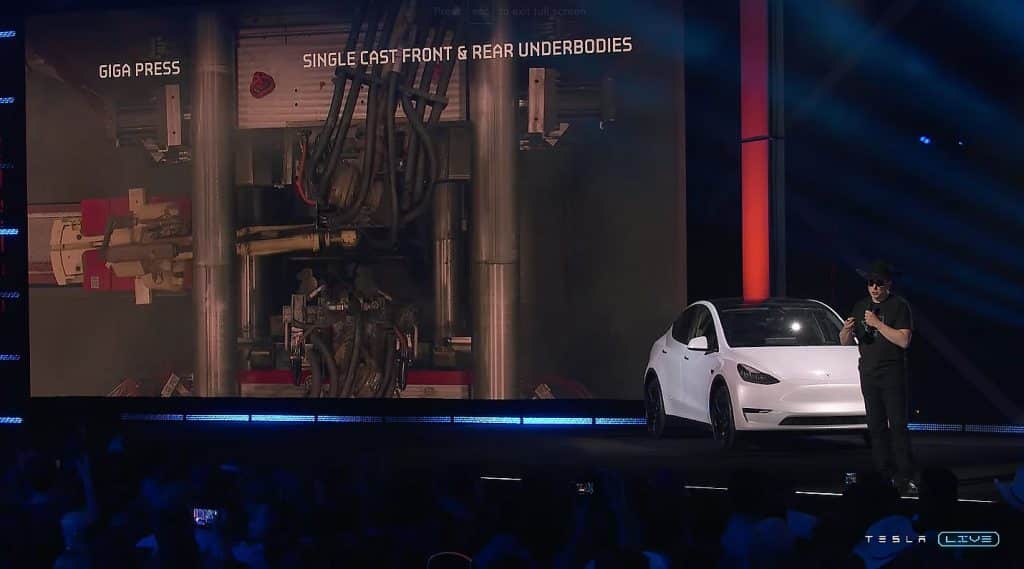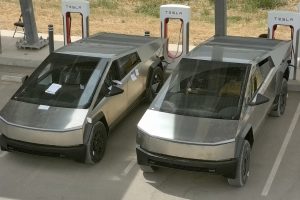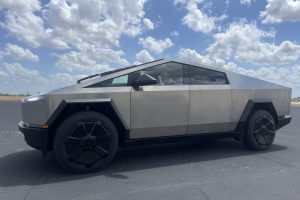Tesla’s rise over the years from an upstart electric sports car maker to the world’s most valuable automaker by market cap is remarkable. Tesla’s lead in the electric vehicle sector continues to grow technology-wise, and the company is also catching up to the world’s veteran carmakers when it comes to its business.
Tesla, for example, has accelerated the timeline for turning cash into product and back to cash, allowing the company to commit more of its resources for investments in its upcoming projects. Tesla’s net profit increased over sevenfold in the year ending in the January to March quarter to $3.3 billion. That’s not far behind Toyota, which posted $3.93 billion.
As noted in a Nikkei Asia report, Tesla’s cash conversion cycle fell to minus 15 days in fiscal 2021. This was the first time that Tesla entered the negative territory since starting the mass production of the Model S back in 2012. Automakers typically require a large amount of working capital on hand to operate. Nikkei noted that a negative cash cycle eliminates this need, as it allows the company to invest its money instead.

Tesla’s cash conversion cycle of minus 15 days is quite a rare feat. Even auto juggernaut Toyota has a cash conversion cycle of 31 days, while Volkswagen has a cycle of 74 days excluding financial operations. Ryosuke Izumida, an analyst at financial services provider Monicle, noted that Tesla is extremely efficient at collecting revenue.
“It almost runs like a built-to-order business, with cash already on hand before starting production,” Izumida said.
What is quite remarkable is that Tesla tends to not sit on its laurels, with the company improving its cash cycle even further by cutting its inventory turnover to 45 days. This became possible through an aggressive streamlining of parts and its vehicles’ assembly process. As a result, Tesla posted a gross profit margin of 26.5% for its automobiles in fiscal 2021. In comparison, Toyota logged 16.7%, while Volkswagen posted 18.7%.
Tesla’s streamlining efforts are not only reflected in the company’s financials. The design of the company’s vehicles themselves is optimized for streamlining as well. The Model 3 and Model Y, which comprise over 90% of Tesla’s total vehicle production, features a minimalist interior centered on a massive touchscreen that replaces traditional meters and buttons.

Nikkei noted that Tesla’s electric cars, thanks to their streamlined design, require far fewer electronic control units (ECUs), which are responsible for steering and stopping vehicles. Typical vehicles utilize about 50 to 70 ECUs, and luxury cars could have about 100. Since Tesla uses fewer components, the need for wiring decreases, saving weight and production costs.
The company’s use of megacasts from the company’s custom Giga Press machines also allows Tesla to build complex components in one casting. Conventional electric cars are estimated to require about 20,000 parts, while gasoline-powered cars require about 30,000. Tesla, however, is believed to have reduced this number further to just about 10,000 parts per vehicle.
Electric vehicles are becoming more mainstream, but it will not be easy to overtake Tesla. More than its sleek cars and rockstar CEO, Tesla’s secret weapon against upcoming rivals is its aggressive streamlining — from its business strategies to the smallest components of its premium electric cars.





